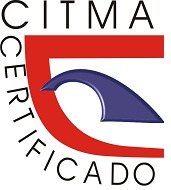Revisión crítica de los Métodos de Supresión Ósea en Imágenes de Rayos X de Tórax
Palabras clave:
Aprendizaje profundo, Imágenes CXR; Maquinas de aprendizaje, Supresión ÓseaResumen
El examen de imágenes de radiografía de tórax es un método de evaluación del grado de efectividad de los protocolos aplicados a pacientes de COVID-19 en estado grave o crítico. Un elemento que influye significativamente en la efectividad de estos exámenes es la presencia en las imágenes de los huesos que interfieren en la correcta detección y evaluación de las lesiones provocadas por la enfermedad. El trabajo tiene por objetivo el estudio crítico de los Métodos de Supresión Ósea (MSO) que han sido propuestos como paso para el pre-procesamiento de imágenes de radiografía de tórax. La metodología empleada se basó en la búsqueda, selección, revisión y análisis de los trabajos más actuales publicados en la temática. Se analizaron los trabajos más representativos. Se realizó un análisis del papel de la supresión ósea para mejorar la eficacia del diagnóstico. Se presentó una clasificación taxonómica de los métodos estudiados. Se realizó una propuesta de posible solución sobre el enfoque de aprendizaje no supervisado, en aras de mejorar el desempeño del diagnóstico tanto de los radiólogos como de sistemas automatizados.
Citas
Albawi. S., T. Mohammed A. and Al-Zawi S.(2017). Understanding of a convolutional neural network. 2017 International Conference on Engineering and Technology (ICET), 2017, pp. 1-6, doi: 10.1109/ICEngTechnol.2017.8308186.
Baltruschat I. M. (2019). When Does Bone Suppression And Lung Field Segmentation Improve Chest X-Ray Disease Classification?. 2019 IEEE 16th International Symposium on Biomedical Imaging (ISBI 2019), 2019, pp. 1362-1366, doi: 10.1109/ISBI.2019.8759510.
Chan, T.-H., Ma, W.-K., Chi, C.-Y., & Wang, Y. (2008). A convex analysis framework for blind separation of non-negative sources. IEEE Transactions on Signal Processing, 56(10), 5120-5134.
Chen, S., & Suzuki, K. (2014). Bone suppression in chest radiographs by means of anatomically specific multiple massive-training ANNs combined with total variation minimization smoothing and consistency processing Computational Intelligence in Biomedical Imaging (pp. 211-235): Springer.
Erdogan, A. T. (2006). A simple geometric blind source separation method for bounded magnitude sources. IEEE Transactions on Signal Processing, 54(2), 438-449.
Gozes, O., & Greenspan, H. (2020). Bone Structures Extraction and Enhancement in Chest Radiographs via CNN Trained on Synthetic Data. Paper presented at the 2020 IEEE 17th International Symposium on Biomedical Imaging (ISBI).
Gusarev, M., Kuleev, R., Khan, A., Rivera, A. R., & Khattak, A. M. (2017). Deep learning models for bone suppression in chest radiographs. Paper presented at the 2017 IEEE Conference on Computational Intelligence in Bioinformatics and Computational Biology (CIBCB).
Huang C., Wang Y., Li X., Ren L., Zhao J., Hu Y., Zhang L., Fan G., Xu J., Gu X., Cheng Z., Yu T., Xia J., Wei Y., Wu W., Xie X., Yin W., Li H., Liu M., Xiao Y., Gao H., Guo L., Xie J., Wang G., Jiang R., Gao Z., Jin Q., Wang J., Cao B. (2020). Clinical features of patients infected with 2019 novel coronavirus in Wuhan, china. The Lancet, 395(10223), 2020. 1
Li, H., Han, H., Li, Z., Wang, L., Wu, Z., Lu, J., & Zhou, S. K. (2020). High-resolution chest x-ray bone suppression using unpaired CT structural priors. IEEE Transactions on medical imaging, 39(10), 3053-3063.
Li, Z., Li, H., Han, H., Shi, G., Wang, J., & Zhou, S. K. (2019). Encoding CT anatomy knowledge for unpaired chest X-ray image decomposition. Paper presented at the International Conference on Medical Image Computing and Computer-Assisted Intervention.
Liang, J., Tang, Y.-X., Tang, Y.-B., Xiao, J., & Summers, R. M. (2020). Bone suppression on chest radiographs with adversarial learning. Paper presented at the Medical Imaging 2020: Computer-Aided Diagnosis.
Liu, Y., Yang, W., She, G., Zhong, L., Yun, Z., Chen, Y., Feng, Q. (2019). Soft Tissue/Bone Decomposition of Conventional Chest Radiographs Using Nonparametric Image Priors. Applied bionics and biomechanics, 2019.
Loog, M., & van Ginneken, B. (2006). Bony structure suppression in chest radiographs. Paper presented at the International Workshop on Computer Vision Approaches to Medical Image Analysis.
Manji, F., Wang, J., Norman, G., Wang, Z., & Koff, D. (2016). Comparison of dual energy subtraction chest radiography and traditional chest X-rays in the detection of pulmonary nodules. Quantitative imaging in medicine and surgery, 6(1), 1.
Matsubara, N., Teramoto, A., Saito, K., & Fujita, H. (2020). Bone suppression for chest X-ray image using a convolutional neural filter. Physical and Engineering Sciences in Medicine, 43(1), 97-108.
Ming-Yen N., Lee Y. P. , Yang J., Yang F. , Li X. , Wang Hongx , Lui M.M. , Lo C. , Leung B. , Khong PL., Hui C. , Yuen K. , Kuo M.D. (2020) . Imaging profile of the COVID-19 infection: Radiologic findings and literature review. Radiology: Cardiothogracic Imaging, 2(1), 2020. 1
Nguyen, H. X., & Dang, T. T. (2015). Ribs suppression in chest x-ray images by using ICA method. Paper presented at the 5th International Conference on Biomedical Engineering in Vietnam.
Obmann, V. C., Christe, A., Ebner, L., Szucs-Farkas, Z., Ott, S. R., Yarram, S., & Stranzinger, E. (2017). Bone subtraction radiography in adult patients with cystic fibrosis. Acta radiologica, 58(8), 929-936.
Plumbley, M. D. (2003). Algorithms for nonnegative independent component analysis. IEEE Transactions on Neural Networks, 14(3), 534-543.
Qin, C., Yao, D., Shi, Y., & Song, Z. (2018). Computer-aided detection in chest radiography based on artificial intelligence: a survey. Biomedical engineering online, 17(1), 1-23.
Rajaraman, S.; Zamzmi, G.; Folio, L.; Alderson, P.; Antani, S. Chest X-ray Bone Suppression for Improving Classification of Tuberculosis-Consistent Findings. Diagnostics 2021, 11, 840. https://doi.org/10.3390/diagnostics11050
Rasheed, T., Ahmed, B., Khan, M. A., Bettayeb, M., Lee, S., & Kim, T.-S. (2007). Rib suppression in frontal chest radiographs: A blind source separation approach. Paper presented at the 2007 9th International Symposium on Signal Processing and Its Applications.
Ronneberger, O., Fischer, P., & Brox, T. (2015). U-net: Convolutional networks for biomedical image segmentation. Paper presented at the International Conference on Medical image computing and computer-assisted intervention.
Sirazitdinov, I., Kubrak, K., Kiselev, S., Tolkachev, A., Kholiavchenko, M., & Ibragimov, B. (2020). Evaluation of Deep Learning Methods for Bone Suppression from Dual Energy Chest Radiography. Paper presented at the International Conference on Artificial Neural Networks.
Suzuki, K., Abe, H., MacMahon, H., & Doi, K. (2006). Image-processing technique for suppressing ribs in chest radiographs by means of massive training artificial neural network (MTANN). IEEE Transactions on medical imaging, 25(4), 406-416.
Vock, P., & Szucs-Farkas, Z. (2009). Dual energy subtraction: principles and clinical applications. European journal of radiology, 72(2), 231-237.
Voulodimos A, Doulamis N., Doulamis A., Protopapadakis E (2018). Deep Learning for Computer Vision: A Brief Review, Computational Intelligence and Neuroscience, vol. 2018, Article ID 7068349, 13 pages,2018.https://doi.org/10.1155/2018/7068349
Von Berg, J., Young, S., Carolus, H., Wolz, R., Saalbach, A., Hidalgo, A., . . . Franquet, T. (2016). A novel bone suppression method that improves lung nodule detection. International journal of computer assisted radiology and surgery, 11(4), 641-655.
Wang, F.-Y., Wang, Y., Chan, T.-H., & Chi, C.-Y. (2006). Blind separation of multichannel biomedical image patterns by non-negative least-correlated component analysis. Paper presented at the International Workshop on Pattern Recognition in Bioinformatics.
Wang, F.-Y., Chi, C.-Y., Chan, T.-H., & Wang, Y. (2009). Nonnegative least-correlated component analysis for separation of dependent sources by volume maximization. IEEE transactions on pattern analysis and machine intelligence, 32(5), 875-888.
Wang, W., Feng, H., Bu, Q., Cui, L., Xie, Y., Zhang, A., Chen, Z. (2020). MDU-Net: A Convolutional Network for Clavicle and Rib Segmentation from a Chest Radiograph. Journal of Healthcare Engineering, 2020.
Zhu, J.-Y., Park, T., Isola, P., & Efros, A. A. (2017). Unpaired image-to-image translation using cycle-consistent adversarial networks. Paper presented at the Proceedings of the IEEE international conference on computer vision.
Descargas
Publicado
Cómo citar
Número
Sección
Licencia
Derechos de autor 2022 Eduardo Garea Llano

Esta obra está bajo una licencia internacional Creative Commons Atribución-NoComercial 4.0.













